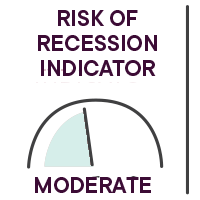Yann Furic
B.B.A., M. Sc., CFA®
Senior Portfolio Manager, Asset Allocation and Alternative Strategies
End of a tumultuous year
December was positive for the markets, with discussions about a new U.S. fiscal package and public health approval of the first vaccine propelling them higher.
Obviously, the availability of vaccines and the speed of distribution will play a key role in each country’s return to normalcy. Meanwhile, the imminent expiry of several wage subsidy programs for individuals and businesses could raise the unemployment rate and hurt consumer confidence, a factor that could slow the recovery.
Focus on the past month

Overview of global equity markets*
- The flagship index of the Canadian stock market, the S&P/TSX, rose 1.7% in December, for a return of 5.6% for 2020.
- In the United States, the S&P 500 gained 2.2% and the Nasdaq, 4%, bringing their returns for the year to 16.5% and 42.7%, respectively.
- International stock markets were also in positive territory during the month, with the EAFE index climbing 3%, for a return of 6.6% for the year.
- Emerging market equities rose 5.5% in December (+16.6% in 2020) and Chinese stocks were up 1.1% (+27.5% in 2020).
* All the percentages in this section are in Canadian dollars. Bloomberg unless otherwise indicated.
Key events

Impact of the pandemic
Governments are still trying to support their workers and their economy, in the context of the prolonged shutdown of certain industries such as tourism and recreation. Certain economic support measures have been renewed in Canada, while in the United States, a new aid package will be put in place.
Declining jobs
Job creation was negative in both countries:
- A loss of 62,600 jobs was recorded in Canada, versus an expected loss of 37,500. The jobless rate is 8.6%.
- In the United States, 140,000 jobs were lost, mainly in the leisure, hospitality and restaurant industries, when forecasts were for 50,000 new jobs. The unemployment rate is 6.7%.
Although they negatively impact the economy, it should be remembered that these job losses are concentrated in the sectors affected by the partial lockdown measures imposed to halt the resurgence of the pandemic.
Canadian bonds: still positive
Government of Canada bonds across maturities posted a positive return of 0.1% for the month. They rose 7.2% in 2020. (Source: Canaccord Genuity)

Our strategic monitoring
Main risks
Risks to watch in the current environment:
- A second economic slowdown could follow the return of widespread lockdown measures in response to the second wave of the pandemic. A decline in consumer confidence could also lead to reduced spending in the medium term.
- The trade disputes between China and the United States have not been resolved and continue to pose a risk for the global economy.
Fundamental indicators
Some economic indicators that we continued to monitor in December.
Consumer confidence ![]()
As in November, the consumer confidence index remained below 100, after two more encouraging months (September and October). U.S. consumers do not see any improvement in sight for their economy or the job market. The rise in COVID-19 cases adds a lot of uncertainty to the future.
Global Purchasing Managers’ Index ![]()
At 53.8, the index has been climbing since November and is now at a recent year high, signalling an increase in purchasing managers’ intentions. Overall, most countries are seeing a rise in purchase intentions in the manufacturing sector which, combined with low inventories, augurs well for the economy.
U.S. retail inventory-to-sales ratio ![]()
This ratio is improving but is still at a 15-year low. During the pandemic, the production of many goods was slowed or halted, while sales continued. The resumption of production to rebuild inventories remains a positive sign.
Benchmark rates in Canada, Europe and the United States ![]()
Rates remain at low levels, which is favourable for an economic recovery. Central banks are still standing by, ready to step in. They are expected to keep rates low until their economies return to steady growth.
François Landry
CFA®
Vice-President and Chief Investment Officer
Vice-Chairman of the Board of Directors of Professionals' Financial - Private Management
Our strategies
(6-to-12 month horizon)
With the financial markets having an excellent month of December on the heels of a strong November, we kept our equity weighting at 65% and our bond weighting at 35% in the FDP Tactical Assets Allocation Private Portfolio. We believe that over a six to twelve month horizon, equity returns will be higher than bond returns
The geographic allocation of equities in our portfolios remained unchanged.
- We have a neutral weighting on Canadian equities.
- We are neutral on U.S. equities. We maintained our exposure to technology and industrial products stocks, which should benefit from announced infrastructure spending and the global economic recovery.
- We are neutral on EAFE (Europe, Australasia, Far East) equities due to the fiscal measures implemented in Europe and the return to partial lockdown of euro zone economies.
- We remain neutral on emerging market equities.
François Landry, CFA
Vice-President and Chief Investment Officer
Yann Furic, B.B.A., M. Sc., CFA
Senior Portfolio Manager, Asset Allocation and Alternative Strategies
Sources: Bloomberg
The opinions expressed here and on the next page do not necessarily represent the views of Professionals’ Financial. The information contained herein has been obtained from sources deemed reliable, but we do not guarantee the accuracy of this information, and it may be incomplete. The opinions expressed are based upon our analysis and interpretation of this information and are not to be construed as a recommendation. Please consult your Wealth Management Advisor.




















